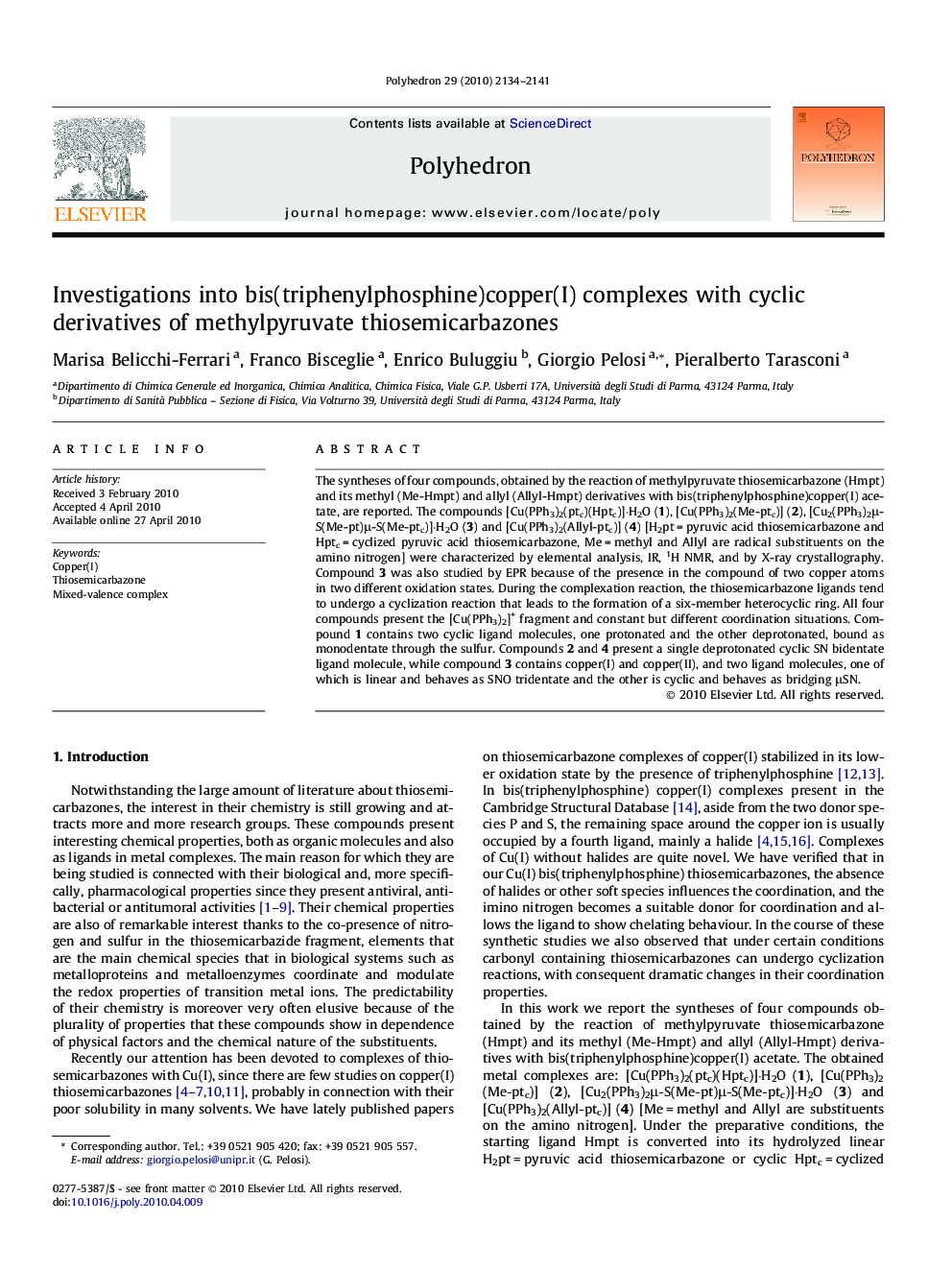| Article ID | Journal | Published Year | Pages | File Type |
|---|---|---|---|---|
| 1338746 | Polyhedron | 2010 | 8 Pages |
The syntheses of four compounds, obtained by the reaction of methylpyruvate thiosemicarbazone (Hmpt) and its methyl (Me-Hmpt) and allyl (Allyl-Hmpt) derivatives with bis(triphenylphosphine)copper(I) acetate, are reported. The compounds [Cu(PPh3)2(ptc)(Hptc)]·H2O (1), [Cu(PPh3)2(Me-ptc)] (2), [Cu2(PPh3)2μ-S(Me-pt)μ-S(Me-ptc)]·H2O (3) and [Cu(PPh3)2(Allyl-ptc)] (4) [H2pt = pyruvic acid thiosemicarbazone and Hptc = cyclized pyruvic acid thiosemicarbazone, Me = methyl and Allyl are radical substituents on the amino nitrogen] were characterized by elemental analysis, IR, 1H NMR, and by X-ray crystallography. Compound 3 was also studied by EPR because of the presence in the compound of two copper atoms in two different oxidation states. During the complexation reaction, the thiosemicarbazone ligands tend to undergo a cyclization reaction that leads to the formation of a six-member heterocyclic ring. All four compounds present the [Cu(PPh3)2]+ fragment and constant but different coordination situations. Compound 1 contains two cyclic ligand molecules, one protonated and the other deprotonated, bound as monodentate through the sulfur. Compounds 2 and 4 present a single deprotonated cyclic SN bidentate ligand molecule, while compound 3 contains copper(I) and copper(II), and two ligand molecules, one of which is linear and behaves as SNO tridentate and the other is cyclic and behaves as bridging μSN.
Graphical abstractIn the process of synthesis of copper(I) thiosemicarbazone derivatives the ligands undergo a cyclization reaction. Interesting structural features were observed, in particular an unexpected mixed valence copper complex was isolated.Figure optionsDownload full-size imageDownload as PowerPoint slide
